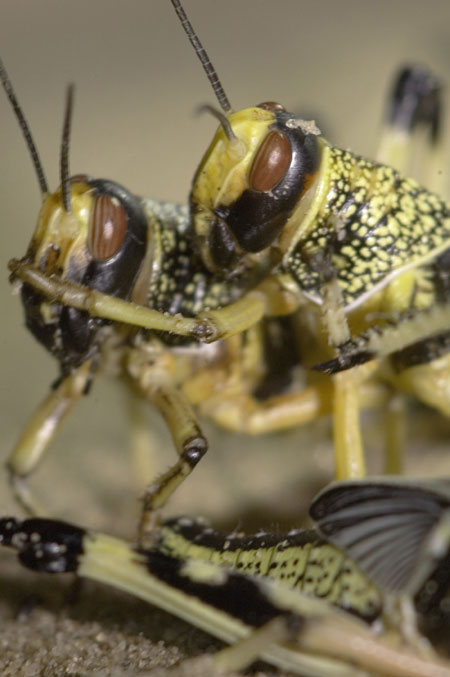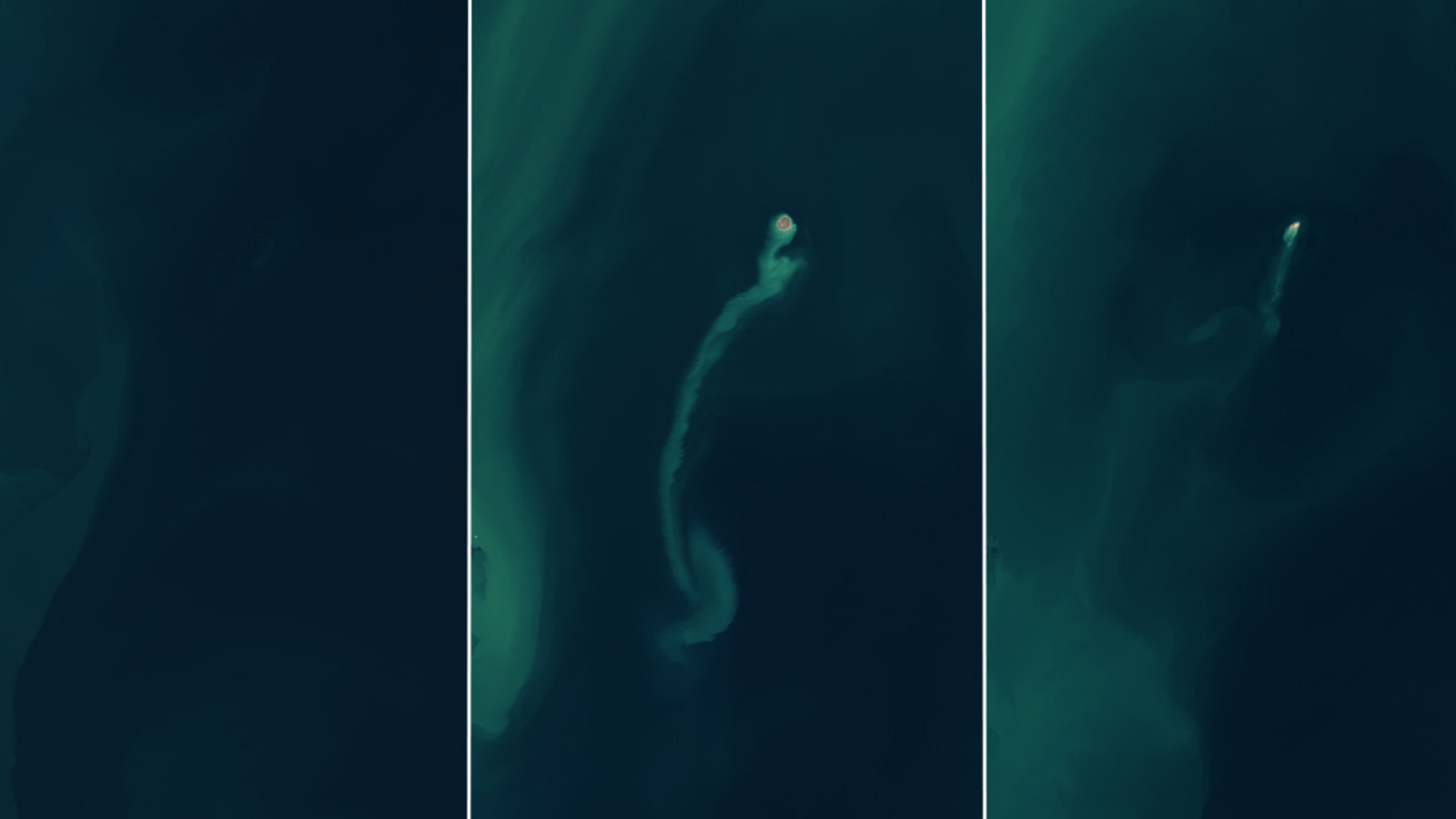Why Locusts Swarm: New Study Finds 'Tipping Point'

Alfred Hitchcock showed it as a large flock of seagulls zeroing in on a town in "The Birds." The Bible describes it as a plague of insects riding on the wind and eating all things in the land of Egypt. Now, scientists have finally figured out the exact moment when a jumbled swarm of creatures becomes an organized, unified, and sometimes terrifying, mass.
Examining a group of desert locusts, researchers found that at low densities, the insects were unorganized and went their separate ways. But when the group's density increased, the bugs fell into an orderly line and began to follow the same direction.
This understanding could help control pests that destroy crops and spread disease.
The mechanisms behind the quick transition from chaos to order is also pertinent to understanding how animals that take advantage of such group dynamics forage, migrate, and flee from predators.
"Collective motion is everywhere around us," said study leader Jerome Buhl at the University of Sydney, Australia. "We are all familiar with the sight of ants forming endless lines on their trails, clouds of birds or fish schools moving in a perfect synchrony and even humans at the busy hours of an underground station or of a ring road."
Lights, camera, action
Theoretical models had previously predicted that animals go through a phase transition that goes from disorder to order when trying to align with their neighbors.
Get the world’s most fascinating discoveries delivered straight to your inbox.
Buhl and colleagues decided to put the idea to the test by placing locusts in an arena and filming them as they joined each other to form a group.
When there were a few of them together, they did not coalesce. As the group grew to 10 to 25 members, the locusts got closer to each other, but still did not move in unison.
It was only when the researchers placed about 30 locusts in the arena that the insects fell into a line and started moving in the same direction.
They had reached their "tipping point."
"The main advantage seems to be that it is safer to gang together than try to go it alone," said study team member Stephen Simpson, also from the University of Sydney. "When population density increases to the extent that you can no longer remain inconspicuous on your own, you are safer from predators in a crowd. Once you are in a crowd, you must keep moving to find food—or become food."
Marching to the same beat
The march of the locusts is a bit of a mystery since they have no leader and each one can only communicate with close neighbors.
"Locusts are not displaying any behavioral sign of communication when marching," Buhl said. "Most probably, their interactions mainly rely on vision and physical contacts—but this is something we are going to test in detail in the future."
And they're not the only ones. Signs of organization can be seen throughout nature.
"In some situations, humans as animals can find themselves navigating through crowds in which they cannot perceive what is going on at the other end of the group, much like any animal in the middle of a large group," Buhl told LiveScience.
Previously, researchers applied similar theoretical models to simulate dense pedestrian flows, traffic jams, and other observable groups.
"It is a fascinating thing to try to determine general principles of organization in very different systems at very different scales and find out that these systems share common properties," Buhl said.
The study is detailed in the June 2 issue of the journal Science.

